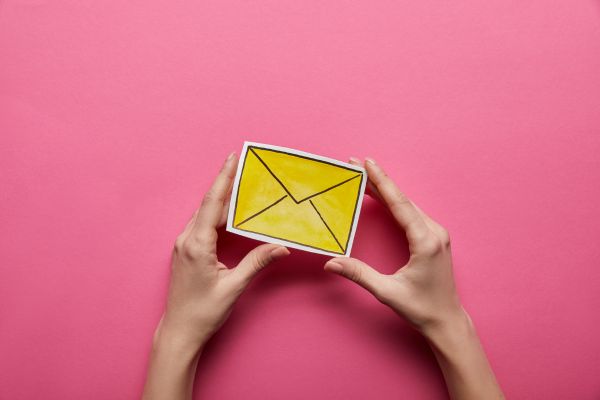
You've probably been in this situation before: your inbox is overflowing with messages, and you're trying to figure out which ones are worth your time. The deciding factor? Those all-important email subject lines.
Whether for work, promotions, or personal correspondence, composing an irresistible subject line is the key to getting your email opened and read. So, let's explore how to create email subject lines that get opened!
What Makes Great Subject Lines That Get Opened?
A good email subject line is essential for the success of your email marketing campaign. It is the first thing that recipients see when they receive your email, and can determine whether they open or delete it.
It blends various elements to grab your recipient's attention and entice them to open and engage with your message. Here are some tried and tested theories to ensure you get eyes on your mail messages:
1. FOMO Subject Lines
FOMO, or the "Fear of Missing Out," is a psychological phenomenon. It is when people feel anxious about not being part of an exciting or interesting event, opportunity, or experience.
FOMO subject lines tap into this powerful sentiment to encourage recipients to open and read an email. When crafting these subject lines, you want your recipients to want to not miss out on something valuable or exclusive you're offering.
FOMO subject lines often use specific language or phrases to create a sense of urgency, scarcity, or exclusivity, such as:
- Limited-time offers: "Only 24 hours left to save 50%!"
- Exclusive content: "Unlock your VIP access before it's gone!"
- Last chance opportunities: "Last chance to get (product/service) before it's gone forever."
- Special promotions: "Don't miss our one-day-only flash sale!"
- Event invitations: "Only (number) spots left - register now."
Such subject lines evoke urgency and provoke the recipient's desire not to be left out. They drive the person to open the email and take your desired action.
However, use FOMO subject lines carefully to ensure they accurately exemplify the email content. Overusing FOMO tactics or misleadingly using them can lead to distrust, frustration, and decreased engagement from your audience.
2. Curiosity Subject Lines
Curiosity subject lines pique your recipient's interest and entice them to open the email for more information.
These subject lines harness the power of curiosity, a natural human tendency to seek new knowledge or experiences. They leave a gap between what your recipient already knows and what they could learn by opening your email.
Curiosity subject lines use intriguing language, questions, or teasers to spark the recipient's interest and create mystery or anticipation. Some examples include:
- Posing a question: "Are you making these common mistakes?"
- Teasing a solution: "The secret to [desired outcome] revealed!"
- Sharing a surprising fact: "5 mind-blowing facts about (famous person/brand) you never knew."
- Hinting at exclusive content: "Here's what our top customers have in common."
- Creating intrigue: "This little-known trick changed everything for me."
Balancing intrigue with clarity and relevance is critical when crafting such subject lines. While you want to evoke interest, ensure that the subject line correctly represents your email content. Misleading subject lines may initially result in higher open rates but can damage your brand's credibility and decrease engagement over time.
More importantly, deliver on the promise of your subject line within the email content. Ensure you provide valuable information or insights that satisfy your recipient's curiosity and encourage further engagement.
3. Personalized Subject Lines
When you want to get your recipient's attention fast, try personalized subject lines! You can tailor them to the individual recipient, leveraging their unique interests, preferences, or behaviors to create a more valuable and engaging experience.
Personalizing these subject lines makes your email feel more like a one-to-one conversation, helping to foster a stronger connection with your recipient. Here are some examples you can use:
- Use your recipient's name to grab their attention and initiate a conversation instantly: "Hey (First Name). We have a special offer just for you."
- Referencing past interactions or behavior to demonstrate you understand the recipient's preferences and interests: "Loved that book? Here are five more you'll enjoy."
- Location-based personalization to make your emails important and timely: "10 must-visit spots in New Jersey this weekend."
- Segmentation and targeting subject lines to appeal to your recipients based on their interests, behaviors, or demographics: "New product alert for (specific segment)."
- Celebrating milestones or events (of your recipient) to strengthen the connection you already have: "Happy birthday, (recipient's name) - here's a special gift for you."
Pro Tip: Keep your personalization objective and pertinent to avoid coming across as intrusive or inauthentic. You want to be mindful of the balance between personalization and privacy, respecting your recipients' data and boundaries.
4. Clear and Relevant Subject Lines
Clarity and relevance are essential elements that contribute to the effectiveness of email subject lines. They ensure the subject line represents the message you’re communicating perfectly. As a result, recipients understand the value of the email and decide whether to open and engage with it.
Clarity
These subject lines convey the purpose and content of your email in a concise and easy-to-understand manner. Keep your subject line straightforward, avoiding jargon, excessive punctuation, or ambiguous language. Any different composition, and you'll confuse or mislead your recipients! Here are some examples of clear subject lines:
- "Up to 50% off summer sale starts now."
- "Don't miss out on our (event) in (location)."
- "Invitation: Join our webinar on remote work strategies."
- "We have this special offer just for you, (First Name)."
Relevance
A relevant subject line aligns the email with the recipient's interests, needs, or preferences. When you tailor your subject lines to resonate with your audience, you demonstrate that you understand and value their time. As such, you make them more likely to engage with your message.
When creating these subject lines, consider the following:
- Your recipient's references, behavior, or past interactions
- Current trends or news and or issues affecting your recipient
- Timing and seasonality (e.g., holidays, industry events)
Here are some examples of relevant email subject lines that'll get opened:
- "Last-minute gift ideas for Father's Day."
- "How the new tax law changes impact your small business."
5. Spam-Free Subject Lines
There is always a risk of your emails ending up in the spam folder, in which case they will not get opened. For this reason, you want to avoid spam triggers so the emails can reach your recipient's inbox.
These subject lines avoid common spam triggers, such as overly promotional language, excessive punctuation, or deceptive phrases, which can lead to your emails being marked as spam or blocked entirely.
Consider these factors for spam-free subject lines:
- Avoid all-caps: Writing your subject lines in all capital letters looks aggressive and may trigger spam filters - it is best to stick to sentence or title cases instead.
- Limit punctuation: Excessive punctuation, especially exclamation points or question marks, can make your subject line appear spammy.
- Be cautious with promotional language: Overusing words like "free," "buy now," "urgent," or "limited time" can raise red flags for spam filters.
- Don't use deceptive tactics: Misleading or clickbait subject lines may lead to higher open rates in the short term. However, they can hurt your credibility and deliverability in the long run.
- Keep it concise: Aim for subject lines around 40-50 characters. Any longer, and they may be truncated in some emails and appear spammy.
Here are some examples of spammy subject lines that won't get opened:
- "Get rich quick with this amazing offer!"
- "Limited time offer - ACT NOW!"
- "Make money fast with this one WEIRD trick!!"
Instead, these subject lines would perform much better:
- "Boost your savings with our simple budgeting tips."
- “Master the art of networking with our exclusive webinar."
- "Find the perfect gift for Mother's Day in our curated collection."
These subject lines are clear, fitting, and engaging without relying on spammy language or formatting. They provide value and maintain a professional tone, and will more likely resonate with your audience for higher open rates.
Conclusion
Composing perfect email subject lines that get opened is a multifaceted journey. Navigating clarity, relevance, personalization, and curiosity while dodging spam triggers requires a keen eye and a steady hand. Yet, you need to consider all these factors to craft the best email subject lines that'll get opened.
As you improve your craft, remember to keep your audience in mind. After all, you want to resonate with their interests and desires while always delivering quality with each email. This guide will arm you with the knowledge you need to engage your recipients and get your emails opened!
Helpmonks helps you create truly effective email campaigns. Using our email management platform, you can craft, manage, and optimize emails to reach a bigger audience. Try the platform for free to see how it can work for your business.






